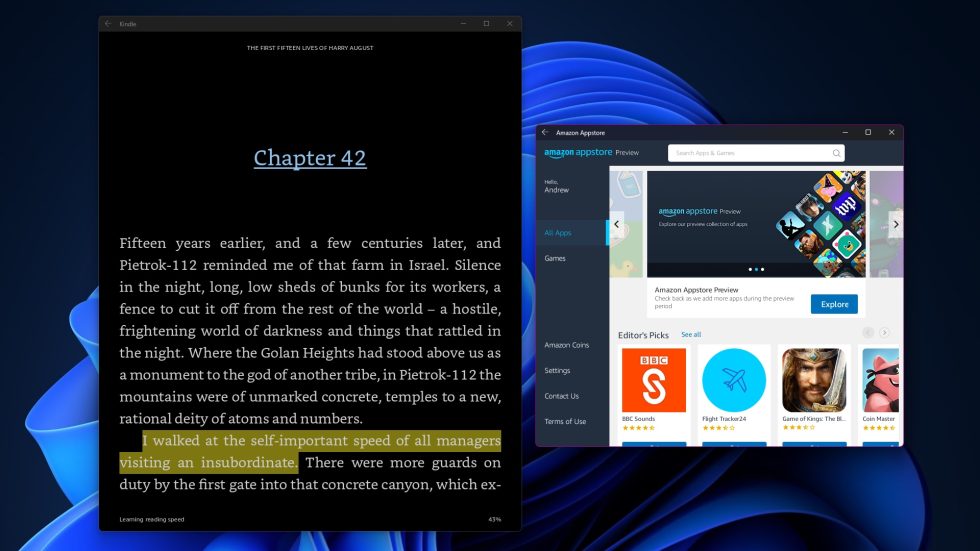
When we reviewed Windows 11 nearly two months ago, it was obvious that some areas of the operating system were still under construction. Many of the built-in apps were still in need of updates, and a handful of features that had been promised back at Windows 11's unveiling in June were still either in preview or missing entirely.
Windows 11 now has two months of updates under its belt. Many of those have focused on fixing the OS's early problems, but others have slowly added features to bring it closer to what Microsoft originally announced. We've covered many of those updates as they've been released. But if you're still on the fence about upgrading and you haven't been following closely, we've put together a quick list of bug fixes and features that have come out since Windows 11 was launched, things Microsoft has been testing since early October, and a few things that we still haven't seen.
Available to the public
The initial release of Windows 11 was build number 22000.194 (you can see this number by running "winver" from the Run box or the Start menu's search bar). As of the November 2021 update, build number 22000.348, the following things have been added, tweaked, or fixed:
- Ryzen performance issues: Both Microsoft and AMD have released software fixes for problems that affected newer AMD Ryzen processors, particularly those with higher core counts. Independent testing verifies that the patches mostly bring Windows 11's Ryzen performance in line with Windows 10's, though there may still be some room for improvement.
- Many, many other bug fixes: It would take too long to enumerate the full list of bugs that Microsoft has fixed in the first few Windows 11 updates (though Microsoft has comprehensive lists here and here), but patches have addressed everything from taskbar rendering problems to virtualization issues to printing bugs, as well as quite a few crashes. There's always more to fix with any software as big and complex as Windows, but rolling the operating system out to a wider swath of the public has given Microsoft plenty of data to use for fixing bugs.
- Cosmetic stuff: Is it a big deal that newer Windows 11 updates have put the "blue" back in "blue screen of death" or that they've added Microsoft's bright, bubbly new emoji designs? Not really. But changing small stuff like this weeks or months after the official public release of a new operating system really reinforces the perception that Windows 11 was a plane that took off while it was still being built.
Currently testing

These apps and features are available to test in some form, usually through the Windows Insider Program's Beta or Dev channels, but they haven't been released to the general public just yet.
- Android apps: The Windows Subsystem for Android will bring Amazon-backed Android apps to Windows 11 systems, provided they have the right virtualization features enabled and meet an even more stringent set of hardware requirements than Windows 11 itself. The preview, available to Windows Insider Beta channel users, only officially supports a small subset of Android apps, but people are already hard at work sideloading other apps from Amazon's and Google's stores.
- A new Media Player: The current Groove Music app is slated to be replaced with a new Media Player app, simply called "Media Player" instead of "Windows Media Player." The new app will handle video files in addition to music when it's released, but that may not be for a while—this app is only available to Dev channel Windows Insiders and not the more-stable Beta or Release Preview channels. Users of the legacy Windows 7-era Media Player app will still be able to access it even once the new app is installed, at least for now.
- A more nimble Windows Subsystem for Linux (WSL): Windows 11 still ships with its own version of WSL, which adds quite a few features compared to the Windows 10 version. But Windows 11 users can also access a version of it in the Microsoft Store, where the company promises faster updates that don't require upgrading to a new version of Windows. While currently a "preview," Microsoft says that it eventually intends for the Store version of WSL to be the primary version.
- Microphone status and muting: Like Android apps, this is a feature that Microsoft showed off in June but didn't end up shipping in the initial version. Whenever you're on a call, a microphone icon will appear in your taskbar, and you'll be able to see which app is using your microphone and mute and unmute yourself directly from that icon without needing to use the app itself. This is currently only available for Microsoft Teams calls in Dev builds of Windows 11, but Microsoft says that other apps will be able to add support for the feature if they want.
- A tweaked Your Phone app: A "coming soon" toggle in the Your Phone app shows off a tweaked UI that we first glimpsed back in September. The update doesn't really change the functionality of the app, but it adds a nifty persistent column for notifications. Unfortunately, the app doesn't include many functional upgrades—like some kind of iPhone support or the ability to open apps or mirror your phone's screen on a wider variety of non-Samsung, non-Microsoft Android phones.
reader comments
224